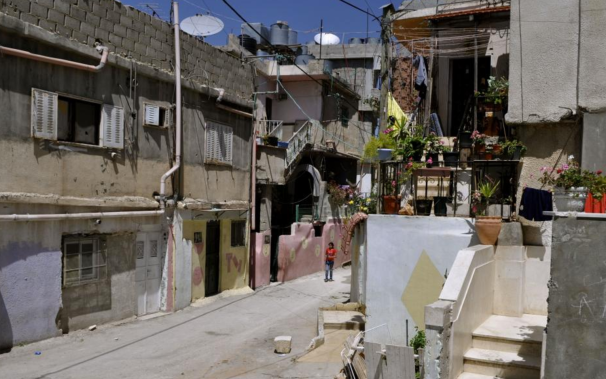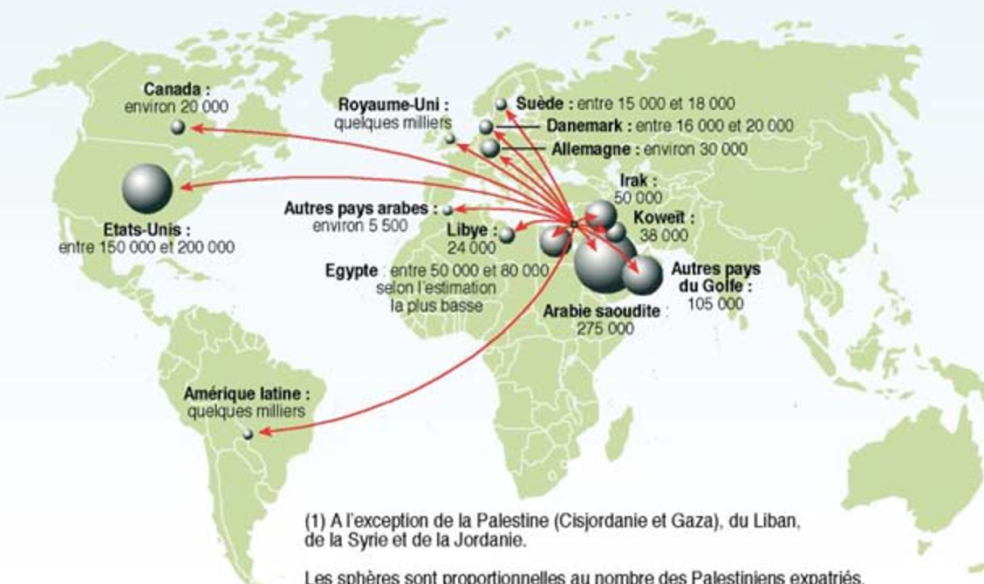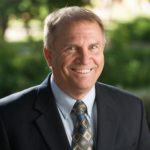Day Nine – A Refugee Camp
Day Nine – A Refugee Camp

There were no tents, no mess hall, no flag pole – there was nothing “campy” about the Dheisheh refuge camp just south of Bethlehem. I don’t know if i was expecting any of these typical camp amenities, but I wasn’t prepared for what i did find. This camp did not have any tents – having moved past that stage in the evolution of a refuge camp – now a collection of one to four-story buildings housing every typical type of community activity from a community center, to schools, to shopping.


This was, for me, the most powerful event of our trip – the intersection in the lives of men, women, and children of their life and story with the stories of their people and the people of Israel.
We spent the afternoon at the camp, but not before an orientation presentation on the the “refuge issue.” [NOTE: the following section will provide some necessary context for the visit to the refuge camp – the account of our visit to the camp resumes, below)
Badil – Resource Center for Palestinian Residency and Refugee Rights


We started our day by visiting Badil, a refuge advocacy organization whose work advances the individual and collective rights of the Palestinian people to return
Mission
BADIL Resource Center for Palestinian Residency and Refugee Rights is an independent, human rights non-profit organization committed to protect and promote the rights of Palestinian refugees and internally displaced persons. Our vision, mission, programs and relationships are defined by our Palestinian identity and the principles of international humanitarian and human rights law. We seek to advance the individual and collective rights of the Palestinian people on this basis.
History
BADIL Resource Center was established in January 1998 based on recommendations issued by a series of popular refugee conferences in the West Bank and Gaza Strip. BADIL is registered with the Palestinian Authority and legally owned by the refugee community represented by a General Assembly composed of human rights defenders and activists in Palestinian civil society, national institutions and refugee community organizations (from their website).
Presentation
Our presenter’s first name was Lubnah (she did not give her last name), a woman with a commanding presence, articulate, and deep and detailed knowledge of issues related to Palestinian rights.

She briefly summarized the work of Badil as:
- Empowering Rights Holders
- Influence Duty Bearers (individuals with the responsibility to influence, enact, and carry out policy, including those on this trip)
The need for this organization is necessitated by the ongoing Nakba, Arabic for “catastrophe” the word the Refugees use to describe their forced displacement since 1917.
Lubnah packed quite a bit of information into her hour-and-one-half presentation, the highlights of which were:
- Important reports, videos, and publications form their organization (see “publications” tab on website).
- A surprising description of how Global issue as Palestinians are “scattered” throughout the world (the Palestinian Diaspora)

- Definition of a “Forcibly Displaced Persons” (FDP) – a person moved against their will either through direct removal or the creation of intolerable conditions that require a move in order to survive and flourish.
- Difference between Refugees and Internally Displaced Person (IDP)
- Refugee – if cross international border
- Internally Displaced Persons – stay within borders, but lose home
- UN Agencies tasked to facilitate return
- UNRW- United Nations Relief and Works
- Makes sure “rights of dignity”
- Provides health care and education
- UNCCP – United Nations Conciliation Commission for Palestine
- Created to assist the “Right of Return”
- Annually submits report, usually three lines, “No progress has been made
- UNRW- United Nations Relief and Works
“Obstacles and Solutions”
In this somewhat oddly named section, Lubnah described the “obstacles” Israel faced in managing the indigenous population and how the “solutions” they devised.
Without question, hesitation, or apology, Lubnah placed the primary (exclusive?) blame for the current Palestinian Diaspora with the Zionist movement and the successful implementation of their goals by the Israeli government. [NOTE: As with yesterday’s post, I will simply relate her account here rather straightforwardly, knowing that there is another side of the story that we will hear later in the week.] She stated her belief that the goal of Zionism was: Maximum Land with Minimum Palestinians and described the nine strategies that the state of Israel uses to keep the Palestinian population in check (see website)
The presentation was powerful, as was the one we experienced the previous day. We knew we were, again, receiving one side of the story, but is was a compelling story!! I, for one, was not fully prepare us for what we were going to see when we met those whose lives were lived at the junction of the stories of the nation of Israel and Palestinian people.
The Camp
Our guide through the camp was Murod, a self-identified refugee who stated as his birth home that city from which he was displaced, not the town of his physical birth. U.S. educated (Washington University, St. Louis – sociology major). He was obviously bright, articulate, and had deeply thought through both his identity as a Palestinian Refugee and as a Resister to the Occupation.

He talked with over lunch before we left to tour the camp. The highlights of his talk:
- He and his fellow Refugees will never except life in the camp as “normal,” but will make it as comfortable as they can until they return.
- The Refugees will accept nothing less that the offer of full right of return to their homes/homeland – whether they accept that offer is up to their discretion.
- They assert their right as occupies, under international law, to resist by any means necessary the control of their occupiers.
Murod was clear and unapologetic in asserting his rights guarenteed by International Law. His thinking was fully in line with what Lubnah had articulated earlier in the day. Both Murod and Lubnah were not what one might normally think of as Refugees – both being thoughtful, articulate, and effective advocates for the rights of the Refugee.
Our tour consisted of a walk through a small portion of the one square-mile, 14,000 person camp. We saw many of the kinds of buildings pictured above, and men, women, and children going about their day-to-day activities (no one was “loitering about,” as I had thought might be the case ahead of time). It was a remarkable place for its industry, friendliness, and its ART!! I’m planning a blog dedicated just to the the role of art and the artist of the Occupation, but for now, below are some of the images you saw on buildings on the side of street, images of fallen members of the community memorialized in murals around the camp – constant reminders of the affect of the occupation.



There was much more art on display throughout our visit – as well as a visit to Banksy’s Gallery across the street from the partition wall. Below, is a picture of the wall (with two of our gang) along with one of his iconic pieces.


Much more art later.
Tomorrow, Yad Vashem – The World Holocaust Remembrance Center and a meeting in the evening with someone about something 😉




